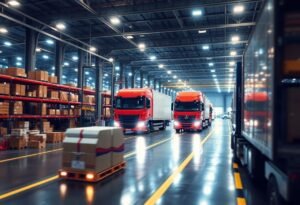As innovation shapes the future of urban environments, self-driving technology emerges as a crucial catalyst in urban planning. This seismic shift is not only transforming transportation but is also redefining how cities are structured and function.
The Role of Autonomous Vehicles in Urban Mobility
Self-driving technology plays a pivotal role in urban mobility by optimizing traffic flow and reducing congestion. Autonomous vehicles can communicate with one another and the surrounding infrastructure, leading to improved efficiency on the roads. By analyzing vast amounts of data in real-time, these vehicles can dynamically adjust routes and speeds, ensuring smoother journeys. As cities adopt more self-driving cars, they can expect a reduction in travel times and a decrease in the environmental impact traditionally associated with high traffic volumes.
Reimagining Public Spaces and Infrastructure
The rise of self-driving technology necessitates a careful rethinking of urban infrastructure. Cities will need to adapt their road infrastructure to accommodate new demands, such as dedicated lanes for autonomous vehicles. Moreover, parking spaces can be repurposed; as self-driving cars drop passengers off, they can relocate to areas designed for efficient vehicle storage. Consequently, urban planners may find opportunities to expand public parks, pedestrian pathways, and community spaces, enhancing overall livability.
Impact on Urban Land Use Policies
As self-driving technology integrates into everyday life, urban land use policies will also evolve. Traditionally, cities were designed around personal vehicle ownership, which dictated the location of housing, commercial areas, and essential services. With an increase in autonomous vehicle usage, we can expect a shift in these paradigms. Urban planners can promote density in previously underutilized areas, leading to vibrant mixed-use developments. This trend fosters community interaction and can reduce reliance on personal vehicles over time.
Enhancing Public Transportation Systems
Self-driving technology holds the potential to enhance public transportation systems significantly. By incorporating autonomous buses and shuttles, cities can offer a more flexible and efficient transport option that connects various neighborhoods and business districts. These autonomous transit solutions can operate on-demand, ensuring that residents have access to transportation when they need it. As public transport becomes more reliable, it’ll encourage more people to leave their cars at home, reducing urban congestion.
Data-Driven Urban Planning Decisions
The implementation of self-driving technology provides a wealth of data that can inform urban planning. City planners can leverage analytics from autonomous systems to understand traffic patterns, pedestrian behaviors, and overall mobility trends. This data-driven approach will allow for more informed decisions regarding future infrastructure investments and policy adjustments while ensuring that solutions truly meet the needs of the community. By focusing on smart city data, planners can create more responsive and adaptable urban spaces.
Preparing for the Future of Urban Living
As cities integrate self-driving technology, embracing innovation remains essential for sustainable urban living. Ensuring that regulatory frameworks evolve alongside these technological advancements is crucial. Policymakers must establish standards that prioritize public safety while encouraging experimentation and innovation. Collaborative efforts between technology companies, city planners, and community members will facilitate the development of urban environments that embrace the future of mobility, leading to smarter, greener, and more inclusive cities.
Disclaimer: This content is for informational purposes only and should not be considered legal or financial advice.





















